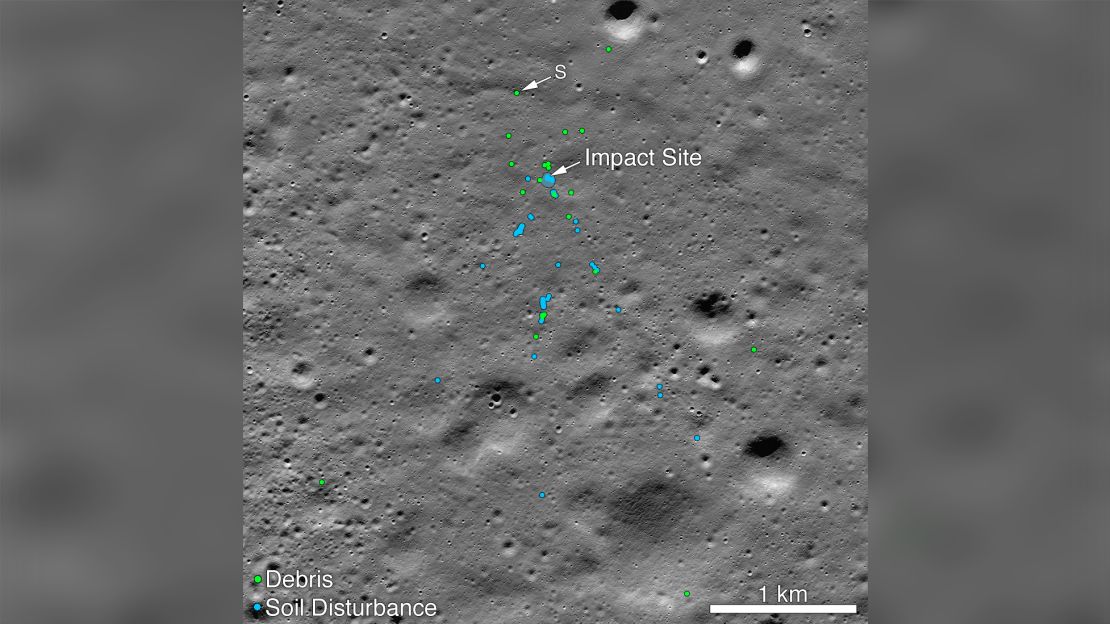In September, India’s historic attempt for a soft landing of their spacecraft and rover, the Chandrayaan-2 Vikram lander, ended prematurely when they lost communication with the craft. Now, images from NASA’s Lunar Reconnaissance Orbiter reveal the crash site and final resting place of the mission.
NASA included colored dots to show the initial impact site of the lander, as well as the debris field created by the crash and the upturned regolith, or moon dust.
The lander was expected to settle about 373 miles from the lunar south pole on September 7, but the team lost contact with the craft shortly before touchdown.

An image mosaic collected ten days later was released to the public for citizen scientists to scan for signs of the lander. An Indian engineer and amateur astronomer Shanmuga Subramanian identified the debris field and contacted NASA. They were able to confirm the finding by comparing before and after images provided by the orbiter.
“As far as I am concerned the Chandrayaan-2 mission was a success. The crash landing of Vikram was sad… but it has got people talking about ISRO and the lander… that is a positive,” Subramanian told CNN affiliate CNN-News 18, referring to the Indian Space Research Organization.
“I feel elated that NASA acknowledged my contribution… I used NASA’s images to make my observations. It is difficult to spot debris on moon… I could only spot one piece of debris,” he added.
The debris field is 466 miles to the northwest of the impact site. The images show dark streaks, dots of debris and a brighter halo of impact.
The landing would have ushered India into the small collection of nations that have achieved successful soft lunar landings including the United States, China and the former Soviet Union. And the mission was targeted to land on the far side of the moon, a largely unexplored region.
The next phase would have been a rover traveling on the lunar surface and collecting mineral and chemical samples for remote scientific analysis. The automated rover is named Pragyan (meaning “wisdom”).
The Chandrayaan-2, which means “moon vehicle” in Sanskrit, took off from the Satish Dhawan Space Centre at Sriharikota in southern Andhra Pradesh on July 22. Weighing 3.8 tons and carrying 13 payloads, it had three elements: lunar orbiter, lander and rover.
The main shuttle, comprising of an orbiter, rover and lander, entered lunar orbit on August 20. Its primary mission was that, after successfully landing on the moon, its rover would collect samples for 14 days. Following that it was scheduled to power down and stop transmitting.
While communication with Vikram was lost, the mission’s orbiter settled into its work, transmitting data to India as it circles the moon in a now extended seven-year mission.

But the attempt itself was an achievement. It was only India’s second moon mission and the first to attempt a lunar landing on a low budget.
By 2022, India aims to launch a manned mission into space. The Chandrayaan missions just laid foundations for that plan.
While Chandrayaan-2 may not have achieved its most tangible objective, it was able to accomplish something more abstract.
Hopes for the homegrown mission managed to unite the country, which, like others across the globe, grapples with an increasingly polarized political climate.

























